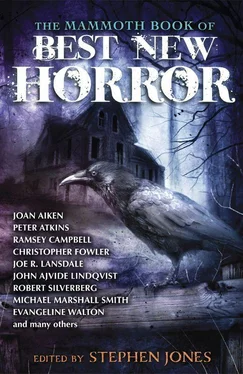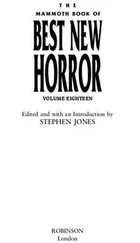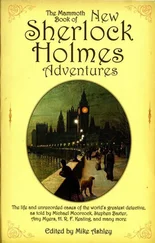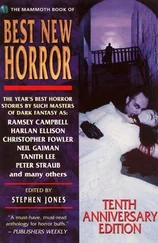“Well, well, Wilby,” said Dean Coombe who was rather more shaken by this recitation than he cared to admit, “that is indeed a most fascinating legend. Most interesting. I must write some of it down.”
“It weren’t no legend, Mr Dean,” said old Wilby. “I had it from my granfer, and he—”
“Quite so, quite so, my dear man,” said the Dean hurriedly. “Nevertheless, move this old monument we must. But make no mistake, we shall re-site it well, for it is certainly a curiosity, and if there are any human remains behind it we shall lay them to rest with all due respect. Goodness me! What was that noise?”
Both Wilby and Dean Coombe heard it, a sound like a long inhalation of breath, ragged and rattling, somewhat as if the breather — if such there was — was experiencing difficulty in drawing in air. It was magnified and distorted by the cathedral’s echo which was particularly reverberant in that part of the building. Dean Coombe was not a fanciful man but he had been at his father’s deathbed and he knew the sound of a man’s breathing as he nears the end. This sound was uncomfortably like it.
“Dear me,” said the Dean. “I really must have that organ seen to.”
Wilby gave the Dean a quizzical stare, then, bidding him a hurried “Good day, Mr Dean”, he began to shuffle off in the direction of the west door with surprising swiftness. Dean Coombe remained behind standing before the monument. A passer-by was surprised to hear him mutter.
“Hah! You won’t affright me that easy, Master Staveley. We shall see!”
The following day the workmen moved in and began the demolition of the eastern wall of the north transept. Dean Coombe had given explicit instructions that the memorial slabs were to be most carefully removed, and, towards evening, he was on hand when the dismantling of the Staveley Memorial began. Palmer, the head mason, had set up scaffolding and constructed a wooden cradle in which to take the stone.
Dean Coombe suggested that the painted alabaster effigy in the niche be removed first, but this proved unexpectedly troublesome. The statue had been very securely cemented to its base, and one of the workmen cut himself on one of the folds of the statue’s long gown. The workmanship was unusually precise and unworn by time.
When the effigy was finally removed, Dean Coombe was intrigued to find that it had been carved all round and that the back of the figure, which had been unseen by any living soul since it had been placed in the niche over two hundred and fifty years ago, had been carved with as much care as the visible front. He noted with particular interest the minuteness with which the sculptor had represented every snaking strand of the subject’s unusually long black hair. He had also taken care to represent a gold seal ring on the third finger of the left hand, even incising the seal with a strange geometrical figure.
The face too repaid closer inspection. As Dean Coombe remarked to a colleague the following day, in a rather striking phrase, it would seem to have been “done from the death rather than from life”. The skin had been painted white, with a slight yellow tinge, the cheeks were sunken and gaunt and — a rather troubling detail — the mouth gaped slightly, revealing a tiny set of jagged greenish teeth. Then there were the eyes.
Dean Coombe did not care to dwell long on the eyes. There was, as he later remarked, something “not quite dead” about them. Under the heavy lids an area of creamy white showed punctuated by the pinpoint of a pupil in a cloudy, greyish iris. The impression given was of a last wild stare at life. The painter of the statue had somehow managed to convey the terror of the sinner at the very point of death.
Despite a certain distaste (as he chose to call it) Dean Coombe was impressed by the remarkably fine workmanship of the image. In the few moments of leisure that he allowed himself he was something of an antiquarian which was why one of his many projects for the cathedral was the setting up of a museum in the chapter house where some of the old plate and vestments of the cathedral could be displayed for the benefit of both the public and the cathedral which would take its sixpences.
“This is such fine work,” said the Dean, in reality thinking aloud, but ostensibly addressing Palmer the mason. “I wonder if the craftsmanship could be Spanish, though they tended to carve in wood rather than alabaster. Certainly whoever did the painting, not necessarily the sculptor, for the painting of sculpture was a specialised art in those days, you know, looks to have been trained in the peninsular. Most unusual. I must get up something to one of the learned journals on the subject. Now then, Palmer, I want you to set this aside. Take great care of it. I shall have a plaster copy made. The replica we will put back in the niche and we can display the original in my chapter house museum, in a glass case where it may be appreciated from all angles — Good gracious, what was that?”
There had been a cry of pain accompanied by — had it been an oath? Palmer and the Dean looked around much startled as they had been absorbed in the contemplation of the effigy. However they soon discovered the cause: it was one of the workmen who had accidentally dropped a lump hammer on his foot. He was much rebuked both by Palmer for carelessness and by Dean Coombe for making an unseemly noise in a sacred building. The man protested that some mysterious force had knocked the hammer from his hand, but he was not listened to, for by this time the light was dimming and it was decided to abandon work for the day.
And so Dean Coombe began to make his way home to the Deanery across the darkling close on that cool March evening. Picture him if you will as he takes this journey, a man you might say not much given to strange fears and frets. Here is a man who walks in life both inwardly and outwardly straight ahead, looking neither to left nor right, untroubled by fancy. This is what you would have said had you seen him stride out from the west door to face a sun which was falling behind the ancient elms in an untidy wrack of clouds. Now he turns a little to his left, and sets forth diagonally across the grass to where the Deanery is situated at the south-west corner of the great close which surrounds the edifice of St Anselm’s, Morchester.
Barely has he begun on this journey when a whole crowd of rooks, a “building” of them, if I may use the correct ornithological term, rises as one from the elms and begins to wheel about above the trees uttering their distinctive “kaa, kaa” sound. Dean Coombe must have witnessed this behaviour countless times, and yet he starts and stops for a moment to consider those birds. Their flappings across the ensanguined sky of evening appear to him more than usually agitated and chaotic, and their strange, forlorn cries, more desolate even than normal. But these thoughts occupy him for no longer than a few seconds, and then he is on his way once more.
He quickens his pace, now more resolved than ever to reach his destination. Yet once or twice we see him glance quickly behind him, so quickly that one wonders if he truly wants to see if anything follows. By the time he reaches the gate of the Deanery passers-by are amazed to see that this very sober divine is almost running. The housemaid is equally astonished to open the door to a breathless man.
We will pass over the Dean’s next few hours. Let us say only that the Deanery, though spacious, is a chilly, damp old house, rather too near the river for comfort. Its physical atmosphere, moreover, is matched by that which exists among its inhabitants. Relations between the Dean and his wife have become distant over the years, and his daughter is a silent creature who longs to escape the Deanery but possesses neither the youth, nor the looks, nor the accomplishments to do so.
Читать дальше










